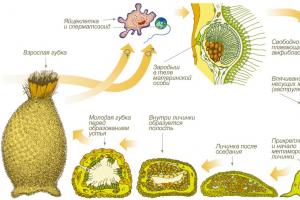The flea is a blood-sucking insect and belongs to the order of arthropods. The length of its body is only 1-5 mm, but there are some rare species that reach 1 cm. Fleas do not have wings, but have strong and long limbs, thanks to which they move. Some individuals can make long jumps to considerable heights.
If environment contributes, the flea lives on average from several months to 2-3 years, and can go without food for a long time. The color of the insect varies from yellow to black, depending on its species and habitat.
The main reasons for the appearance of fleas in apartments:
- migration of insects from neighbors;
- from public corridors and entrances;
- from pets;
- dust (for example, after repair);
- living in lower floors or basements;
- unsanitary conditions and lack of hygiene;
- from people's clothes and shoes;
- from rodents (rat fleas).
How to remove fleas
Not only is living next to fleas unpleasant, it can also be dangerous. Arthropods feed on the blood of people and animals, and their bite causes pain, irritation, itching and redness of the skin. In addition, they can be carriers of infectious diseases such as hepatitis, tuberculosis, typhoid, plague, malaria and other infections.

Penetrating into a home, they settle in their favorite places:
- in carpets, bedspreads, linen boxes, upholstered furniture;
- in bed;
- in places where pets rest;
- under baseboards, window sills and wallpaper;
- in other secluded places, grooves and crevices.
Fleas multiply quickly, so if their presence is detected in the house, you must immediately take measures to eliminate them. Different kinds This gnat is removed using different methods.
Cat and dog fleas
If your pet suddenly begins to itch and behave restlessly, then most likely there are fleas in its fur. They can be easily detected by examining the areas behind the ears and belly of the animal. It is there that they most often lay their larvae, and if, for example, you lower a dog into water, the fleas will begin to actively jump on the pet’s head.

There are several ways to get rid of insects from cats and dogs:
- special detergents and shampoos for animals;
- drops on wool;
- collars (usually as a preventive measure);
- sprays and aerosols.
The greatest effect can be observed from sprays and aerosols. When using them, one must take into account the fact that animals often lick their fur, and the products contain toxic substances that can cause poisoning. Therefore, before choosing a method for eliminating fleas from an animal’s fur, it is advisable to consult a veterinarian.
Bed and linen fleas
Most often, fleas do not live permanently in laundry. They are forced to move around in search of food, but can lay eggs in the laundry. It's unpleasant when fleas infest your bed. It is in this place that they are most comfortable, since in a dream a person often does not feel bites and bloodsuckers can calmly feed and reproduce.
If, after sleep, red itchy bites appear on the body, mainly on the legs, and small black spots or dots on the bed linen, then this indicates the appearance of fleas.

Then the following measures must be taken immediately:
- wash linen drawers and cabinets with laundry soap or vinegar;
- vacuum upholstered furniture;
- wash all laundry in hot water;
- iron things thoroughly;
- Take blankets, pillows, mattresses out into the cold for a while or warm them well in the sun.
Grass and earth fleas

Grass and earth fleas bite painfully and bother people and animals. But they are easier to remove than other insect species. It is enough to eliminate the factors contributing to their reproduction and carry out disinfection.
The fact that fleas live on humans is a common misconception that has nothing in common with reality. Most For some time, they live in hidden places located in close proximity to food sources. Insect larvae are also not grown on living things. Fleas do not reproduce on a person's head. During the growth process, the “fry” feed on rotting remains (to the question of the importance of hygiene in the apartment) or simply the excrement of adults. Until the larvae reach the appropriate age, they pose no threat to us.
Why don't fleas live on people? Their nature simply does not require this. Unlike lice, these insects are very mobile, and quickly changing their location is not difficult for them. Fleas end up in human hair only to visit a food service outlet. The rest of the time they try to stay away from us. The standard body length of a representative of this species is 1.6-3.2 mm. The bite can last from a few seconds to two dozen minutes.
 Why are bites dangerous?
Why are bites dangerous?
We figured out whether fleas live on people, now let's talk about the danger of their bites. The standard reaction to contact is pulicosis. Its symptoms are similar to allergic ones:
- profuse rashes and inflammation appear;
- lymph nodes enlarge;
- ulcers form in the oral cavity;
- suppuration occurs;
- The temperature rises, insomnia occurs, headaches, and causeless irritability occur.
Other individuals
- call a professional team;
- use a special aerosol;
- apply insecticidal powders and dusts.
If you don’t want to bother with how to remove human fleas, exposing yourself and your family to the danger of coming into contact with toxic substances, it is better to invite professionals. Specialists will carry out a complete disinfestation of the premises, destroying all the larvae. However, getting rid of fleas from a person on your own is not so difficult and much cheaper. Among aerosols, products from well-known manufacturers Raid and Raptor receive good responses. Powders are also quite effective. Dusts are used to combat larvae. Will fleas be able to live in human hair after such treatment? No, but nothing will stop them from returning soon if you do not pay enough attention to the sanitary condition of your home. 
Very often, the problem of how to remove fleas from a person is a consequence of his excessive love for outdoor recreation. If you regularly travel outside the city for hunting or fishing, always use insect repellent sprays. Ointments are offered as an alternative, but they are less effective. We know that fleas cannot live in human hair, but finding a harmless area will not be difficult for them. Spraying the spray onto the skin is much easier and faster than applying it to the body and head. Also, when going outdoors, dress appropriately. Avoid direct contact with animals.
Pet owners know well what fleas are, as they often encounter this problem with their pets. If you look at the insect close up, you can see a lot of detail. Scientists, studying the flea under a microscope, noted the general similarity of all species:
Interesting!
While jumping, the insect constantly changes direction. The jump itself gives the flea an acceleration that is 50 times greater than the acceleration of a spaceship.
The flea weighs an average of 0.03 grams and occurs at a rapid pace, laying approximately 1,500 eggs during its lifetime. The transition stage between eggs and larvae lasts about two weeks. The larvae are worm-like, move quickly, feed on decaying debris, do not like light, and try to hide in cracks, carpets and other dark places.
Fleas are found in all seasons of the year. Both males and females feed on blood. They live in the nests of birds, squirrels, in the burrows of gophers, hamsters, jerboas and other small animals, and are distributed throughout the world. The main hosts are mammals. Representatives of fleas have been found even in Antarctica. But against the general background, the colony of insects that bite humans is not so numerous.
On the Internet you can find any information about what kind of fleas there are, where they live, and the characteristics of this type of blood-sucking insect. IN real life They are difficult to see without special devices, so you can see the fleas in the photo in a greatly enlarged form.
There are a huge number of these insects, and many believe that they are all representatives different types. In fact, there are not that many families. They are often given names depending on where they live. Let's look at the most popular types of bloodsuckers.
Very educational Interesting Facts about fleas. The tiny insect can pull 160,000 times its own weight. For a person, this would equal 2,689 double-decker buses. A flea is able to jump non-stop 30,000 times to a height that is 150 times its own height.
Despite the fact that these insects feed on blood, they can live in nature, hiding in the sand or soil. Pests feel especially comfortable in damp and warm places, so they often choose basements, sheds, and abandoned buildings to live in. They can settle in a pile of garbage, in bird nests, or animal burrows.
Moving into the house, pests set up their nests in such secluded places as:
- the inside of the skirting boards;
- cracks in window openings;
- carpets;
- pet bedding;
- bed sheets;
- cloth.
Although pests choose textiles when there are a lot of them in the house. Many people, when asking whether fleas live on humans, appeal to the fact that human hair is similar to animal fur. If pests are able to live in the hair of cats and dogs, then they can live on humans.
Under a microscope it is clearly visible that the flea is covered with small bristles growing densely on its body. With them she clings to animal fur.
Blood-sucking pests bite quite painfully. It is better not to scratch their bites, so as not to introduce an infection into the wound. Although wanting to scratch the bite site and not being able to do so is a big difficulty. Their jumping ability saves them from being caught right at the moment of an insect bite. If an animal flea escapes in thick fur, then there is nowhere for it to hide on human legs. If these small insects lived and reproduced on people, they would have died out long ago.
Can a flea live on a person?
Fleas are blood-sucking pests, there are a large number of varieties of such insects. However, not all of them can live on the human epidermis. Some species can remain on the human body for a certain period until they are completely full, after which the insect leaves its victim.
Pests cannot reside on the human epidermis for the following reasons:
Let's celebrate! Insects feed on blood using a special trunk, which contributes to the appearance of unpleasant sensations.
Flea habitats
Pests hide in the hairy part of the body, while insects move quickly and infect a person in various areas. Most often, these types of bloodsucking insects accumulate in bedding and carpets. An insect appears on the human body only when it needs food.
Tired of fighting pests?
Are there cockroaches, mice or other pests in your dacha or apartment? We need to fight them! They are carriers of serious diseases: salmonellosis, rabies.
Many summer residents are faced with pests that destroy crops and damage plants.
It has the following properties:
- Gets rid of mosquitoes, cockroaches, rodents, ants, bedbugs
- Safe for children and pets
- Powered by mains, no recharging required
- There is no addictive effect in pests
- Large area of operation of the device
Can it be transmitted from cats or dogs?

Absolutely all types of pests that feed on blood can affect people. There are some species that can live not only on animals, but also feed primarily on human blood.
Such bloodsucking creatures live indoors and attack people during sleep, mainly in the legs, abdomen or back. You can notice the insect in bedding and in the corners of your home. After bites, a red dot with clear boundaries remains on the body.
Are fleas dangerous for humans?
Bloodsuckers can contribute to the appearance of problems; they multiply quickly and can produce bites in large numbers. The bites cause unpleasant symptoms of itching and, in large numbers, merge into one area with inflammation and swelling.
Bites can cause the following types of problems:
- suppuration in the affected areas, swelling of the skin and inflammatory process;
- reaction to toxic compounds in saliva, which manifest themselves as allergies and ulcers;
- bites in the eye area lead to decreased vision and swelling;
- high body temperature;
- damage to human lymph nodes.
Let's celebrate! There are types of fleas, such as sand fleas, which can penetrate the layers of the human epidermis and live under the skin. However, this species is extremely rare and only in certain countries.

A type of pest that feeds on human blood, but does not live on the human body. These pests live in residential areas and are most often brought in from the street with the help of pets or on outer clothing.
The insect has the following features:
- the flat-shaped body is difficult to damage when pressed;
- the pest’s legs have a large number of hooks, with the help of which they attach to the epidermis;
- may be brown or black.
- when visiting places with a lot of vegetation, you must choose closed-type clothing;
- avoid places with a lack of sanitary conditions;
- Regularly monitor the condition of your pets’ fur;
- add chlorine to water for house cleaning;
- eliminate cracks and damage in floors;
- regularly shred clothes and bed linen;
- carry out prevention methods once a year;
- use special collars for animals to repel pests;
- lay citrus peels on window sills and in the corners of rooms;
- use a vacuum cleaner to clean the room;
- Avoid contact with stray animals.
Children are very often exposed to flea bites because skin children are more sensitive and negatively perceive toxic substances that are present in the pest’s saliva.
Good to know! To eliminate the insect, the home should be thoroughly treated several times using special preparations. In advanced cases, it is difficult to solve the problem on your own; it is necessary to use the services of specialists.








